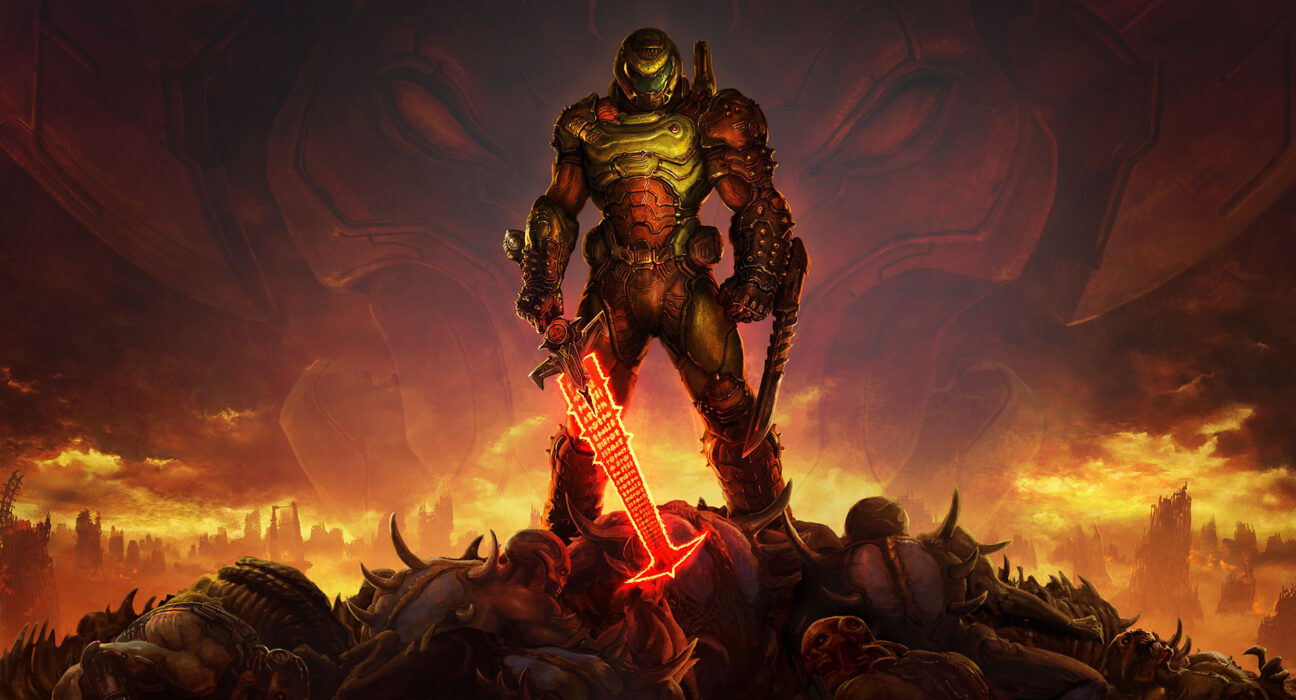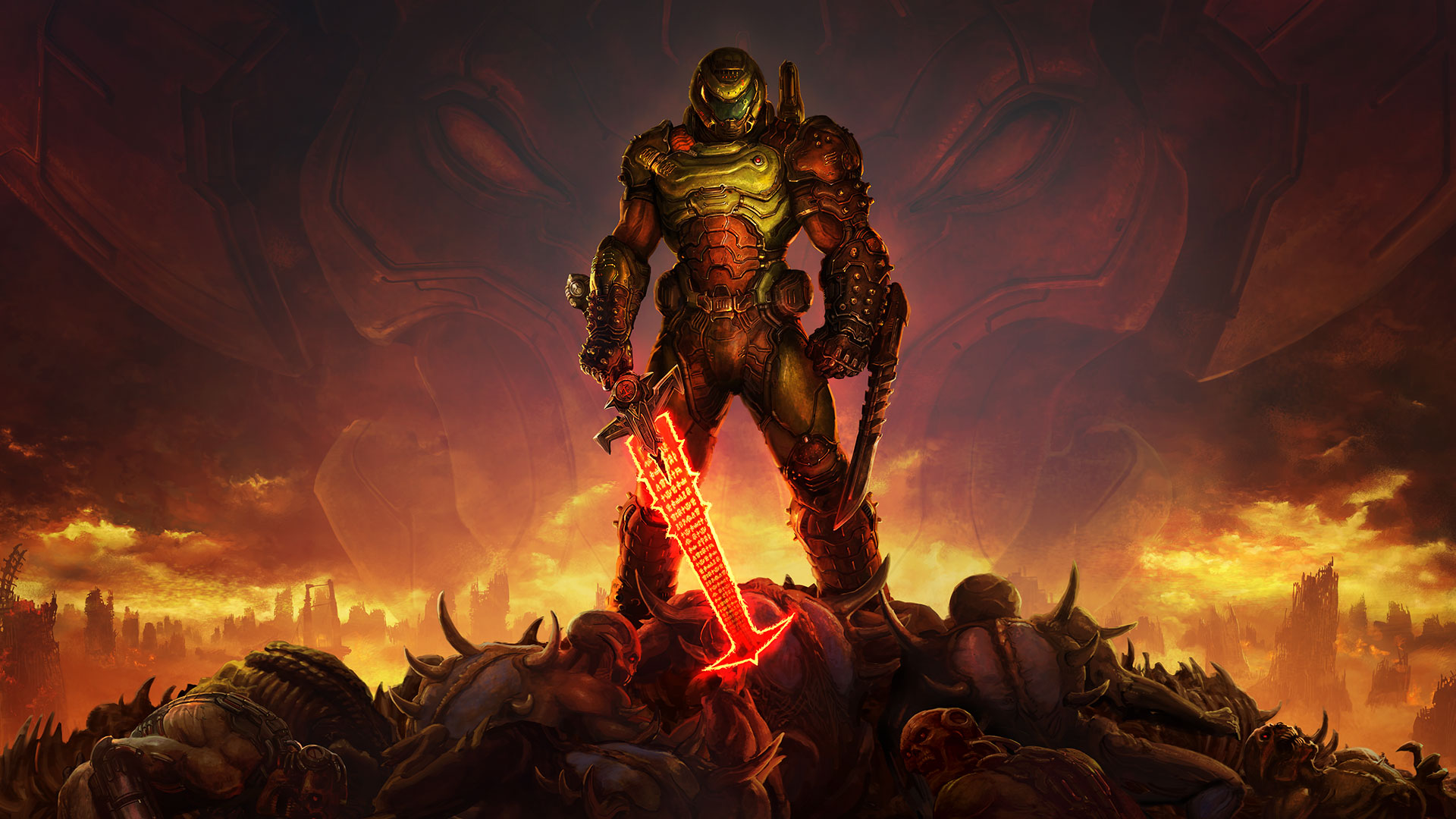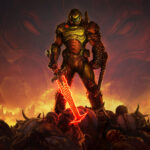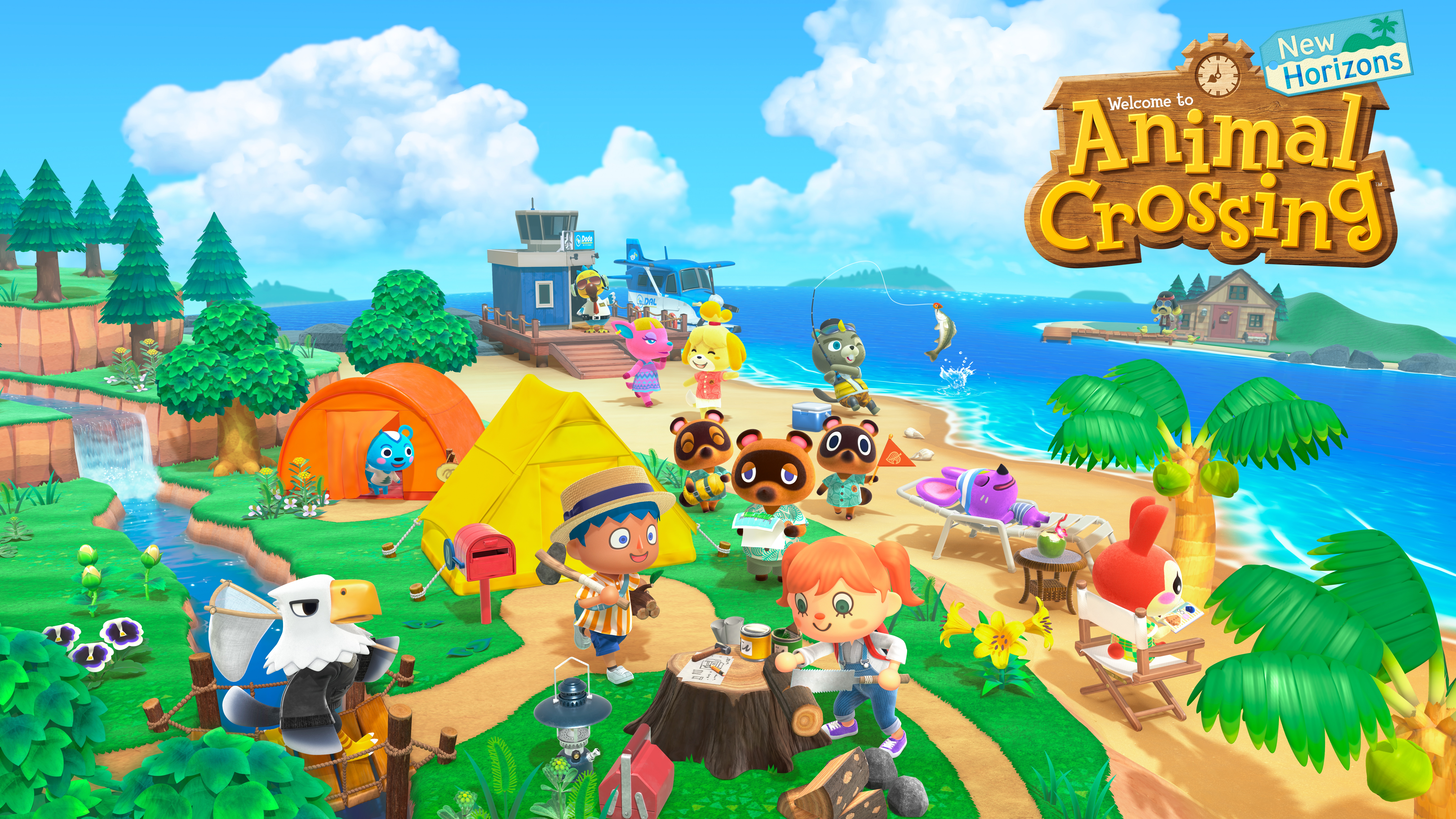This review was originally posted on March 31, 2020.
DOOM (2016) was a bit of a weird game. It more or less came out of nowhere and the prerelease marketing material left quite a bit to be desired. It took fans of the shooter genre by storm with its incredibly slick gameplay, killer soundtrack and performance that made other well-optimised games look like spoiled milk. Developer id Software really nailed rebooting the classic First-Person Shooter in the modern-day, even down to the game design, where your odds of survival increased as you maintained your agility and speed rather than hunkering down and taking cover. It was a game that, by all rights, should have been average but somehow had the right ingredients to be incredible. Going into the sequel, DOOM Eternal, I was concerned that 2016’s magic was a one-hit-wonder kind of deal that was mostly driven by the unexpected (high) quality of the game. Eternal was never going to have the same favour in the lead-up to its release. With all this in mind, it’s still safe to say the DOOM Eternal could very well be the shooter of the generation.
DOOM Eternal is a game about aggression and destruction. It starts by thrusting Doomguy onto Earth after it has been seized by the demons of Hell. There’s demon iconography everywhere, lava is spewing from the Earth and entire cities have been razed. I have to say, I knew the art team at id was good but I was not expecting such an accurate depiction of modern-day Australia. Accuracy aside, at no point does the game shy away from the destructive force of Doomguy as he has retained his superhuman manoeuvrability from the 2016 reboot. Rather than go down the route of reducing the character down to nothing as so many sequels do (read: God of War 2), they’ve basically positioned Doomguy as the unwavering force who uses whatever tools he has available to make mincemeat of the demons in a fashion that would arouse even the likes of Sweeney Todd, and it’s his job to fight back the demons and save Earth. The game attempts to improve on every facet of its predecessor and this could not be any clearer than in the general story writing – one of the weaker points for DOOM (2016). The previous game was never exactly bad for writing but its storytelling was more focused around Doomguy as a character and his general disregard for anyone and anything that even remotely stood in his way. While this is still at the heart of DOOM Eternal, there has been a renewed focus on immediate storytelling and not just communicating character through animation. The events of the game have a refreshing sense of importance and it makes DOOM Eternal even more enjoyable.
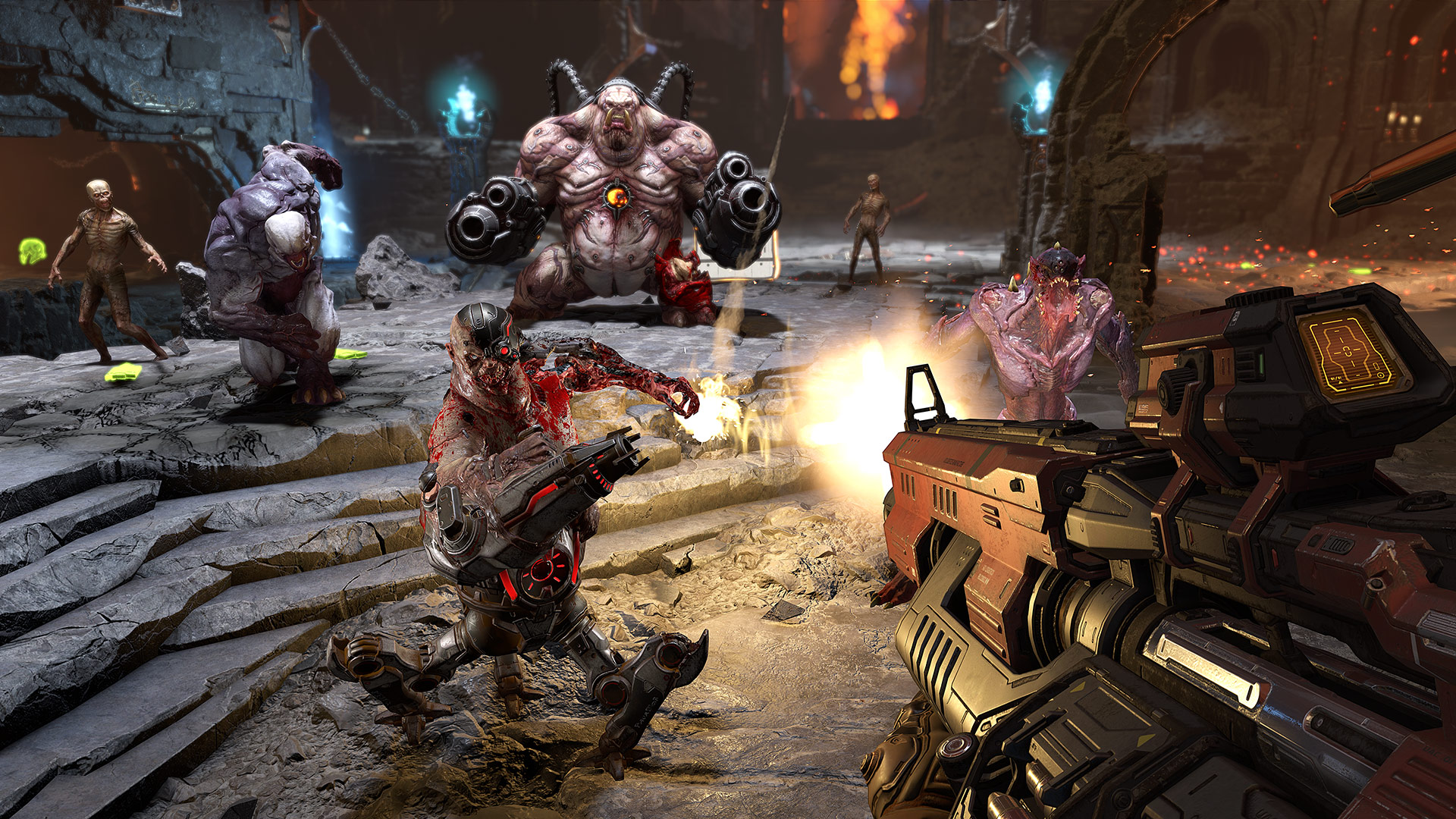
Sourced from Gamelust
In all aspects, DOOM Eternal is a game that has two core values. The first being destruction and chaos, the other being exploration. While you would be correct in assuming this means there is a focus on secrets and level design that reward exploration, the writing of the campaign itself also explores a number of ideas such as the origins of Doomguy himself. You learn that the demons are more than just the spawns of Hell and you learn why Argent Energy is so important. Surprisingly, the story is carefully crafted to serve both the game and the world. The Doom series has never really been a heavily story-based shooter, yet it feels like it’s beginning to tread along those waters.
While the approach to storytelling in DOOM Eternal is far more direct, there is still a remarkable brilliance to be found in its subtleties. Like the previous game, there is an attention to detail placed within Doomguy’s animation and this is really where his character comes to life. Just in the starting sequence alone, Doomguy ignores what is being said to him and quite literally rips his opponent’s head off. It’s one of the few instances where not having a voice adds to the charm of the character. Entire interactions are played out perfectly without so much as a peep from Doomguy. It really goes to show the importance of animation and body language when it comes to building and communicating a character’s traits. At no point is the player confused about who Doomguy is as a character as all the information you need to know is laid bare. He punches demons and strikes fear into all demonkind, that’s all you need to know to play the game. There’s no convoluted explanation, you’re just given a shotgun and are told to make the demons regret coming to Earth. This is where we find ourselves with the gameplay for DOOM Eternal.
When I think of DOOM 2016’s gameplay, I think of the quote that was used in the description of the Gjallarhorn in Destiny: “if there is beauty in destruction, why not also in its delivery?” You’d be hard-pressed to find someone who disagrees that the reboot of this FPS classic has incredibly slick and responsive gameplay. It did away with all the bells and whistles of modern gameplay standards and instead opted to refine and master what made this IP as successful as it is, which consisted of the following three questions:
- Am I encouraged to move around as much as possible?
- Is the act of dispatching these enemies gratifying?
- Do the guns feel good to shoot?

Sourced from PC Mag
It’s in these three questions where the beauty of DOOM’s gameplay lies. The 2016 reboot managed to effortlessly answer these questions. DOOM Eternal attempts to break the mold in this case, where it constantly finds interesting ways to add to and vary the gameplay without the risk of becoming cumbersome or confusing. Perhaps the biggest example of this is the increase of movement capabilities within DOOM Eternal. Doomguy still retains his ability to double jump, but he has also been given the ability to YEET, both on the ground and in midair. What this translates into is some very clever and perilous platforming, as well as encounter design that either complements the abuse of this mechanic or restricts your aerial manoeuvrability as a means of testing your on-ground adaptability. To aid in the platforming design, the ability to grab onto specific walls has been added and the platforming dynamic this creates is incredibly interesting, especially when you factor in the first-person perspective – a camera perspective which is not very common on games that have wall-grabbing or climbing.
Now it comes as no surprise that most gameplay changes serve the point of increasing the pure destructive force of Doomguy and what better way to do that than to upgrade Doomguy’s arsenal. Amongst the upgrades to the arsenal, there has also been a slight weapon change. The Railgun from the previous game has been swapped out for the Ballista. While at face value they serve functionally the same purpose, the Ballista holds a few extra tricks up its sleeve, as do a lot of the weapons in DOOM Eternal. The Super Shotgun serves as a grappling hook of sorts for grappling onto enemies (not the environment) and the chaingun can serve as either hyper-offensive or offensive-defence. The versatility of each weapon based on their one or two upgrades is impressive. What may be smaller in number translates to a substantial difference in experience and play style. As a means of encouraging the use of all weapons, ammunition has been more finely tuned to become somewhat of a scarce resource. Players at lower difficulties won’t feel this so much, but at higher difficulties, the game can feel incredibly punishing if you are relying on one weapon. The ability to generate ammo from using the chainsaw on an enemy does still exist but if you are only using it to refill one or two weapons then you aren’t capitalising on the potency of that ammo refill. Players who know how to vary their weapons will find the most success.
Perhaps one of the most intriguing changes, however, has to do with the Blood Punch. For those unaware, Glory Kills were slightly altered in DOOM VFR (the Virtual Reality Doom game) so that rather than use a scripted and restrictive animation, Glory Kills became more or less a dash punch that obliterated whatever you were hitting. That has made its way somewhat into DOOM Eternal as the Blood Punch, which serves as the game’s answer to melee. Your regular punches are piss-weak in Eternal, to the point where they are just a waste of time. However, using a Blood Punch allows your fists to become threatening outside of Glory Kills. It’s a nice way to counter a system that was rife for abuse: forcing a Glory Kill now requires an ammo investment (but not much, most of the weaker enemies can be primed for a Glory Kill with just a few bullets). With all this aside, the Blood Punch is still an interesting mechanic because it fundamentally changes the balance of melee compared to the previous game. While the previous game’s melee was threatening to small enemies and virtually useless on anything else, the Blood Punch in Eternal is anything but. Skill upgrades allow for it to be more than a single target attack, with an AOE (area of effect) upgrade that has the potential to trigger a Glory Kill chain.
Amongst all the positive changes for DOOM Eternal, there is one change that I don’t find to be conducive to the core DOOM experience – the timing/reaction-based encounters. Throughout the campaign, you will encounter an enemy called the Marauder who is defeated in a way that is very new to the game. Rather than the standard run-and-gun tactics of DOOM, the Marauder asks the player to be calm and collected, waiting for the right time to strike, which is signalled by a flash of green light in his eyes. In essence, this is fine as the fights generally work as intended and there is something to be said about the gratifying nature of beating an enemy who is reliant on you making mistakes. The Marauder will let you know when you have messed up and there is a chance that he will not be kind about it. Where the problem lies, however, is within the game itself. DOOM is a game about wanton destruction. Doomguy is a person who gives no thought to conventional limitations and practices and instead decides to approach everything headfirst (or shotgun-first, for that matter). Doomguy is not the type of character who sees an enemy and waits for the right time to strike, he just whips out his shotgun and starts painting the town red. If combat encounters like the Marauder existed in another game, it would be okay as the character(s) in those games might be more inclined to that calm and collected sort of behaviour, but DOOM is not the place for this design. This is not to say that the encounters are bad, but they feel like the antithesis to what DOOM is about. I do appreciate that id is trying to introduce some interesting new mechanics though, since this is the best way to push a property or medium forward. Also, I’m fairly certain that the Marauder soured my love for dogs; that fire dog was a pain in my neck.
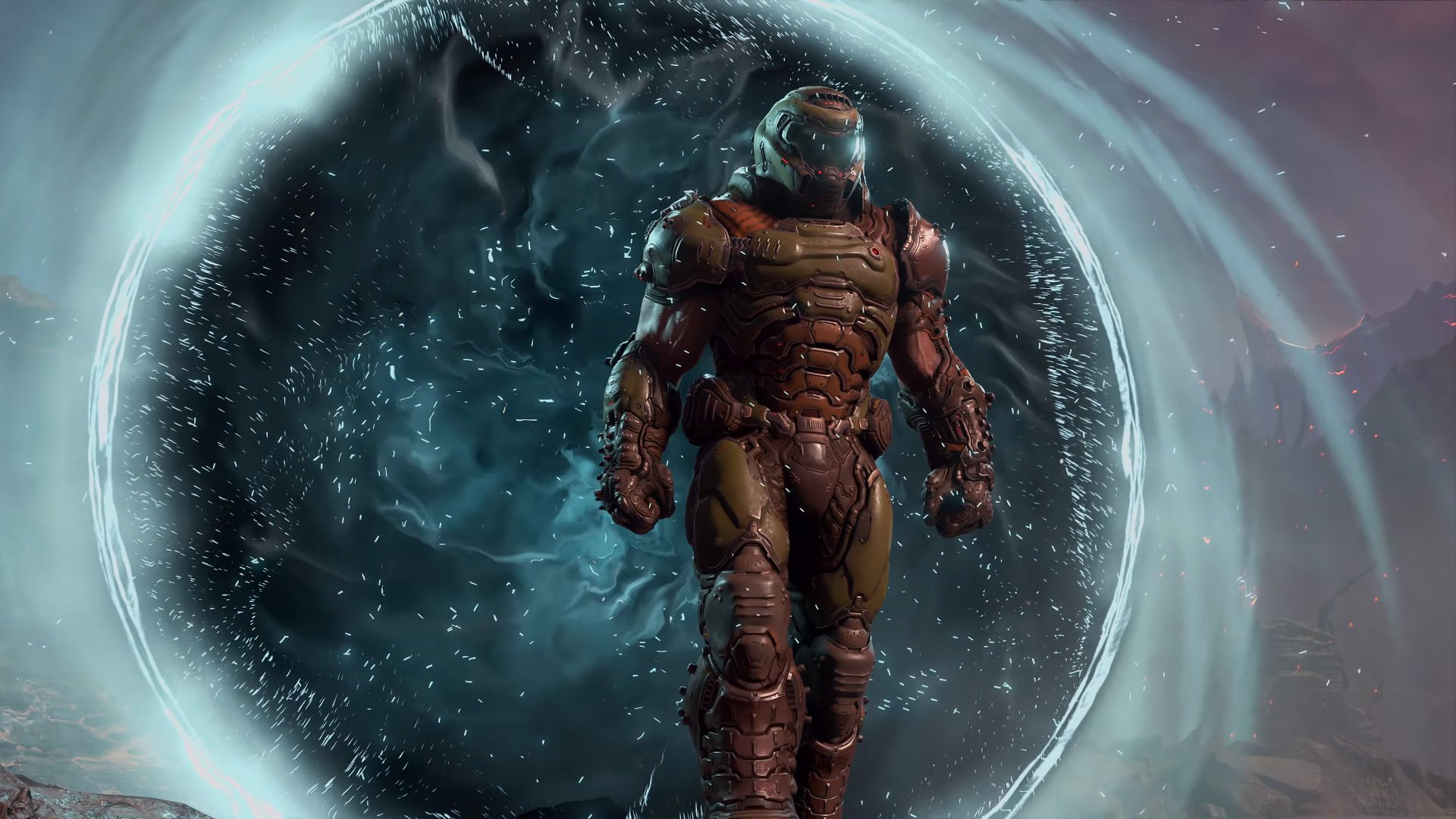
Sourced from VGC
If you were to try and point out one of the most important facets of the previous game, it would more than likely be the music. Composer Mick Gordon wrote beautifully simple and chaotic tunes that were the right mix of aggressive heavy metal and bassy electronic music, a blend of genres that perfectly complemented the more neon-futuristic direction of the series. Low-range guitar and electronic bass that got the blood pumping, working perfectly to make you want to punch demons in the face. Metal has always had the knack of making people want to release pent-up aggression but the force that is Mick Gordon’s compositions is something else. He has delivered yet again with the DOOM Eternal soundtrack and, at its heart, it retains the same core ideal. The well-timed beats that rely more on synchronisation rather than syncopation and dense bass create a rhythmic feedback loop that intertwines with the gameplay. The music is the ballad and the demon destruction is the dance. Where simple chords and root notes are the melody, explosions, gunfire and demonic shrieks are the harmony. The music serves its purpose so well that it is part of the identity of DOOM in the modern age, and the thought of a DOOM game without this blood-pumping, demon-smashing music is almost sacrilege. Mick Gordon has outdone himself and I would not be surprised to see this go up for Soundtrack of the Year come awards season.
DOOM (2016)’s performance was buttery smooth, almost flawless. I originally played it on my launch PS4 and was treated to a pleasing visual suite and rock-solid performance, with a performance target of 60 FPS that it met 90% of the time. DOOM Eternal is no different, save for the fact that id has somehow increased the visual fidelity of the game by a very noticeable margin, including impressive alpha, very good depth of field and volumetric lighting/fog that is incredibly crisp. This is all in conjunction with the insane level of detail in the enemies, crisp animation and dramatic changes in lighting while remaining incredibly stable and remarkably sharp. While playing the game at 2560×1080 (1080p ultrawide), the edges never softened and aliasing wasn’t that much of an issue; id Tech is still one of the most performant engines around. The only time my frames dropped significantly was during the Gladiator fight, and that was only while performing the Glory Kill punches on the boss himself. Granted, there was an absurd level of detail being rendered up close, along with alpha particles spraying everywhere and a level of detail that looks wonderful in the background.
- Conclusion
- DOOM Eternal effortlessly captures the brilliance of the 2016 reboot and proceeds to add an interesting dynamic to the equation. While not all the changes pay off as well as id would have hoped, as evidenced by the Marauder, there is still a remarkable amount of innovation in a title that brings the first-person shooter genre back to its roots. Its gameplay is just as slick as ever, the platforming is superb, the writing is much improved and the animation is just as communicative as before. id has hit the nail on the head with the right balance of innovation and familiarity to create what is perhaps the best first-person shooter of this generation.
- PC
- ASUS ROG Strix X570-F Gaming
- Ryzen 7 2700X
- Gigabyte AORUS GeForce GTX 1080 Ti (Driver ver. 442.74)
- G.Skill Trident Z RGB 16 GB (2×8 GB) DDR4-3000
- Kingston A400 128GB SSD (OS), Crucial MX500 M.2 2280 250GB (game install drive)
- Windows 10 (Build ver. 18363)



